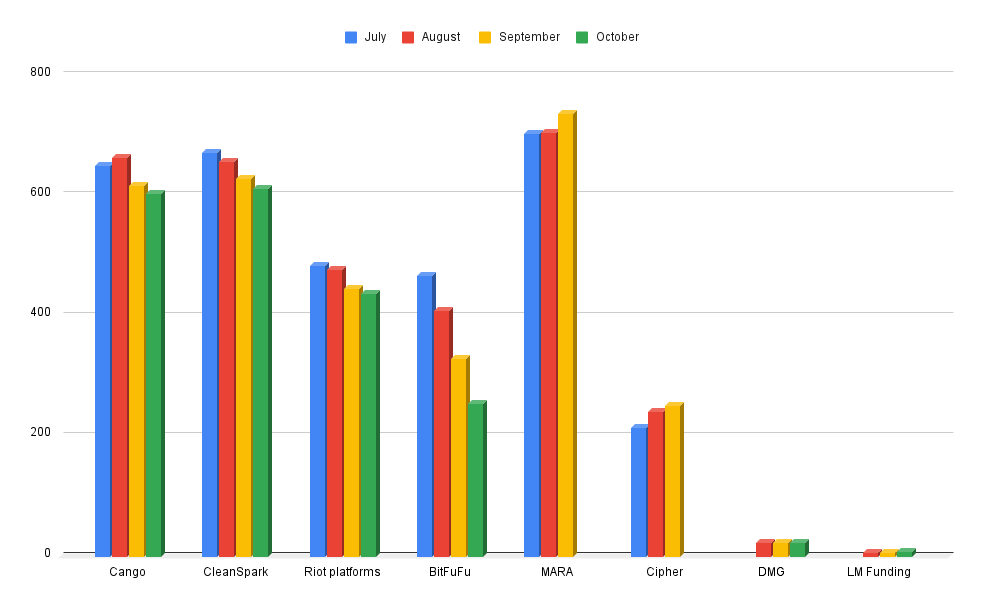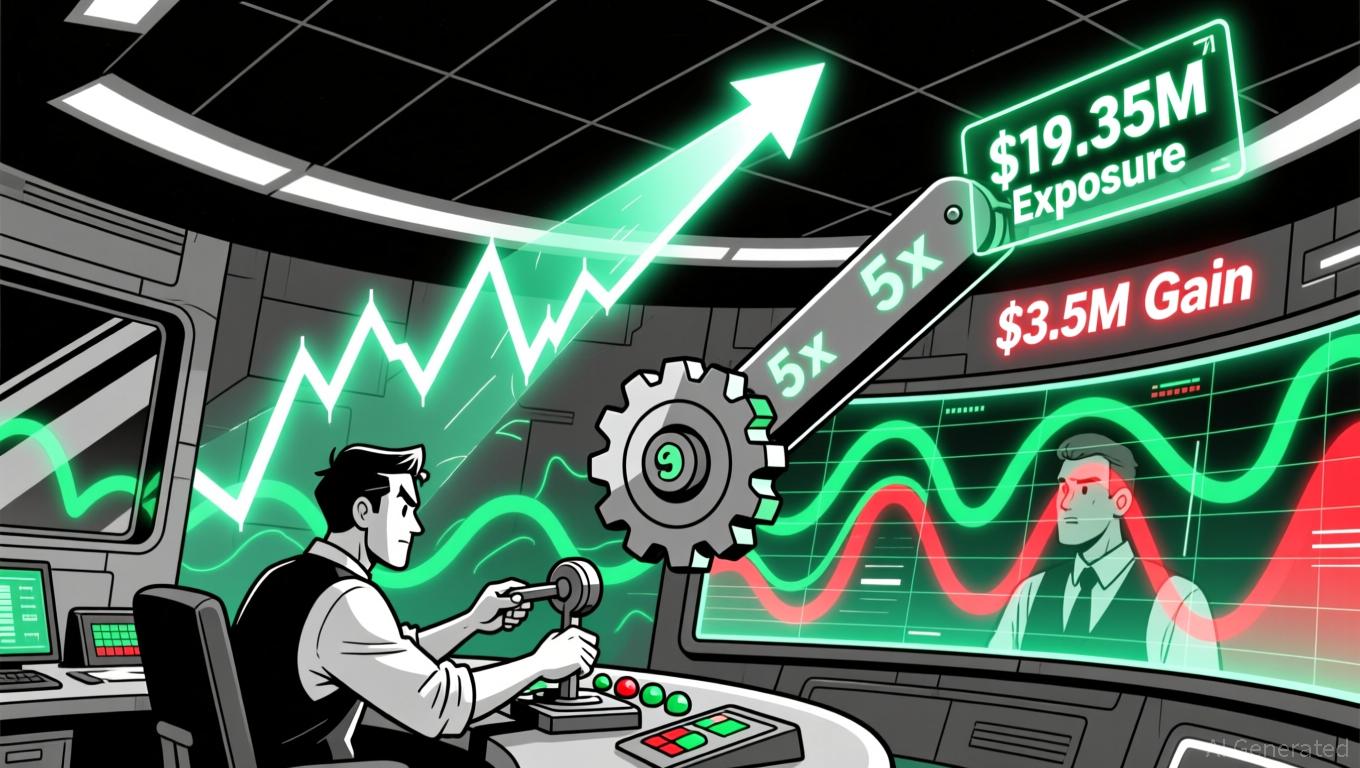October BTC Mining: High Costs, Tight Margins, and AI Transformation
October 2025 marked a turning point for Bitcoin mining, with rising production costs and record network difficulty driving a strategic shift toward AI data infrastructure. Industry leaders are evolving to survive in a high-cost, competitive landscape.
In October 2025, the global top-tier Bitcoin miners slightly increased production, overall costs, and network difficulty reached new all-time highs. At the same time, several mining firms began shifting their strategic focus toward AI-related data infrastructure.
This shift aimed to diversify revenue streams and reduce dependence on Bitcoin price volatility.
Slight Drop in Bitcoin Production, Growing Trend of BTC Sales
Compared to September, overall Bitcoin (BTC) mining output declined slightly, primarily due to higher mining difficulty and unstable power supplies across several North American regions.
Specifically, Cango Inc. mined approximately 602.6 BTC in October, bringing its total Bitcoin holdings to 6,412.6 BTC. CleanSpark reported a similar output to September, producing 612 BTC during the month.
Riot Platforms mined 437 BTC, down from 445 BTC in the previous month. Its total Bitcoin holdings reached 19,324 BTC, up 37 BTC from the last month. However, given the production volume, the data suggest that the company likely sold part of its mined Bitcoin to manage its cash flow.
BitFuFu produced 253 BTC, bringing total holdings to 1,953 BTC, suggesting potential BTC liquidation to optimize capital.
Among smaller miners, DMG Blockchain mined 23 BTC, raising its total holdings to 359 BTC, while LM Funding America maintained stable production levels. Despite their modest scale, these smaller entities help maintain Bitcoin’s decentralization by distributing global hashrate more evenly.
 October Bitcoin mining output by some public companies. Source: BeInCrypto
October Bitcoin mining output by some public companies. Source: BeInCrypto
Marathon Digital Holdings (MARA) and Cipher Mining have not yet disclosed their October Bitcoin production data. However, both companies released positive Q3 2025 financial results, signaling operational resilience despite a weaker September.
Marathon maintained its industry leadership with a record-breaking $123 million profit in the third quarter of 2025. On-chain data shows that MARA’s mining address transferred 2,348 BTC (approximately $236 million) within 12 hours, likely profit-taking following Bitcoin’s recent price rally.
Cipher Mining also reported solid quarterly results with $72 million in revenue and announced a $1.4 billion high-yield bond issuance to fund a Google-linked data center project.
Similarly, TeraWulf expects third-quarter 2025 revenue to be between $48 million and $52 million. The company raised $3.2 billion in senior secured notes to expand its US-based infrastructure. These large-scale financing moves underscore a broader industry trend. Major miners are repositioning themselves as providers of digital infrastructure, bridging Bitcoin mining with AI-driven high-performance computing (HPC).
Production Costs Hit Record High, Intensifying Industry Competition
According to MacroMicro, the average cost to produce 1 BTC surged to $114,842, marking the highest level in history. Meanwhile, Bitcoin’s mining difficulty rose by 6.31% to 155.97T, setting a new all-time high for the network. With Bitcoin’s market price hovering around $102,000, the widening gap between market value and breakeven cost is squeezing profit margins, especially for smaller operators.
 Average production cost per BTC. Source:
MacroMicro
Average production cost per BTC. Source:
MacroMicro
In response, miners are being compelled to enhance energy efficiency, invest in next-generation ASICs, and scale their operations to safeguard profitability. Industry leaders such as Cipher, TeraWulf, and CleanSpark are experimenting with hybrid models combining Bitcoin mining and HPC for AI workloads, a strategy increasingly seen as inevitable amid mounting cost pressures.
Simultaneously, governments and sovereign investment funds are entering the Bitcoin mining sector to enhance their control over strategic energy and data assets. This growing “nationalization” of mining could reshape the global power structure, as some nations leverage surplus energy resources to mine Bitcoin more efficiently, thereby reducing reliance on private-sector operators.
October 2025 marks the beginning of a profound structural transformation within the Bitcoin mining industry. Only firms with strong technology capabilities, financial stability, and long-term vision are likely to endure.
As energy costs and mining difficulty continue to rise, 2026 could see the most significant wave of mergers and consolidations in the industry’s history, paving the way for a global hybrid model integrating Bitcoin mining with AI data computation.
Disclaimer: The content of this article solely reflects the author's opinion and does not represent the platform in any capacity. This article is not intended to serve as a reference for making investment decisions.
You may also like
ZEC rises 6.32% in 24 hours as Hyperliquid holds a $19.35M long position
- ZEC surged 6.32% in 24 hours to $538.2 on Nov 22, 2025, despite a 9.7% weekly drop, with 36.25% monthly and 879.76% annual gains. - A $19.35M ZEC long position on Hyperliquid (5x leverage) shows $3.5M unrealized gains, highlighting institutional bullishness amid price volatility. - The leveraged position underscores amplified risks/rewards, with narrowing gains signaling market uncertainty and the need for cautious monitoring of macroeconomic/on-chain trends.

Bitcoin Updates: Billions Flow Out of Bitcoin ETFs While Stablecoins Strengthen as Core of Finance
- BlackRock's IBIT Bitcoin ETF recorded a record $523M outflow, pushing November's total U.S. spot Bitcoin ETF redemptions to $2.96B amid Bitcoin's 30% price drop. - Analysts link the exodus to weak fundamentals and macroeconomic uncertainty, with ETF outflows and long-term holder sales tightening liquidity and eroding investor confidence. - BlackRock filed for an Ethereum staking ETF as stablecoins surge in cross-border finance, processing $9T in 2025 payments while Bitcoin ETFs face sustained outflows an

Zcash (ZEC) Price Rally: Factors Fueling Privacy Coins Amid Regulatory Scrutiny
- Zcash (ZEC) surged 472% to $420 in 2025, driven by institutional adoption and regulatory clarity under the U.S. Clarity Act. - Grayscale's $137M Zcash Trust investment and Cypherpunk's $18M treasury boost signaled institutional confidence in privacy coins. - Zcash's dual-mode privacy features attracted investors fleeing Bitcoin's transparency, with 30% of its supply now in shielded pools. - Regulatory risks persist, including potential FinCEN crackdowns on shielded transactions, despite the Clarity Act's
Bitcoin Updates Today: Is Crypto’s Intense Fear Signaling a Market Bottom or Just a Misleading Decline?
- Crypto Fear & Greed Index fell to 24, with Bitcoin consolidating between $103,000-$115,000 amid prolonged market anxiety. - Extended fear periods historically precede market bottoms, but traders warn the index often lags and misfires in volatile conditions. - Coinbase aims to stabilize markets with 24/7 altcoin futures, yet regulatory clarity and persistent ETF outflows remain critical factors.

